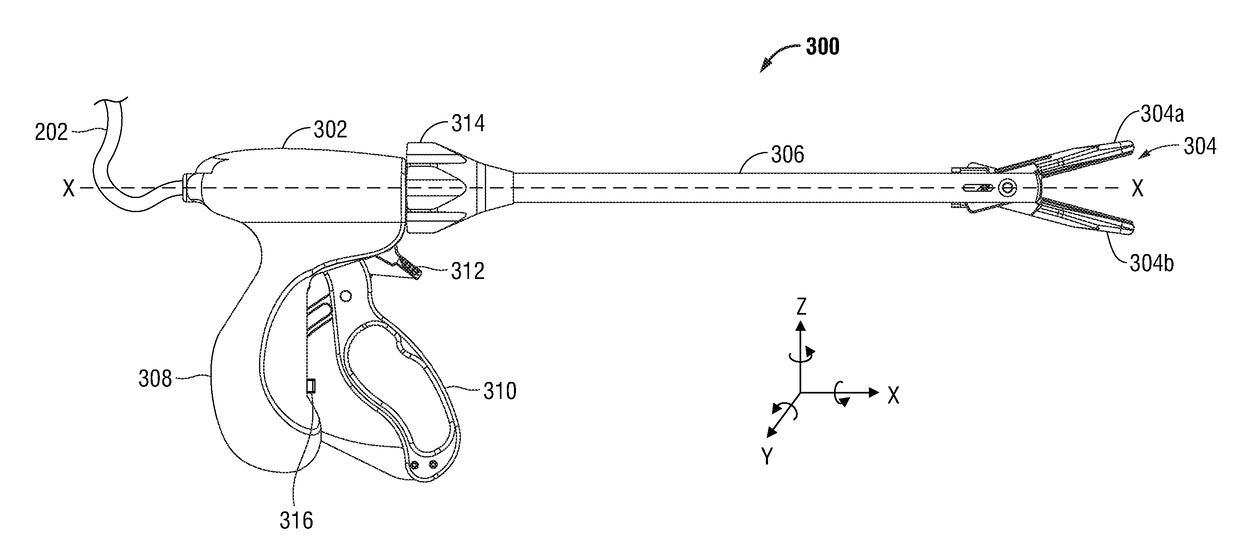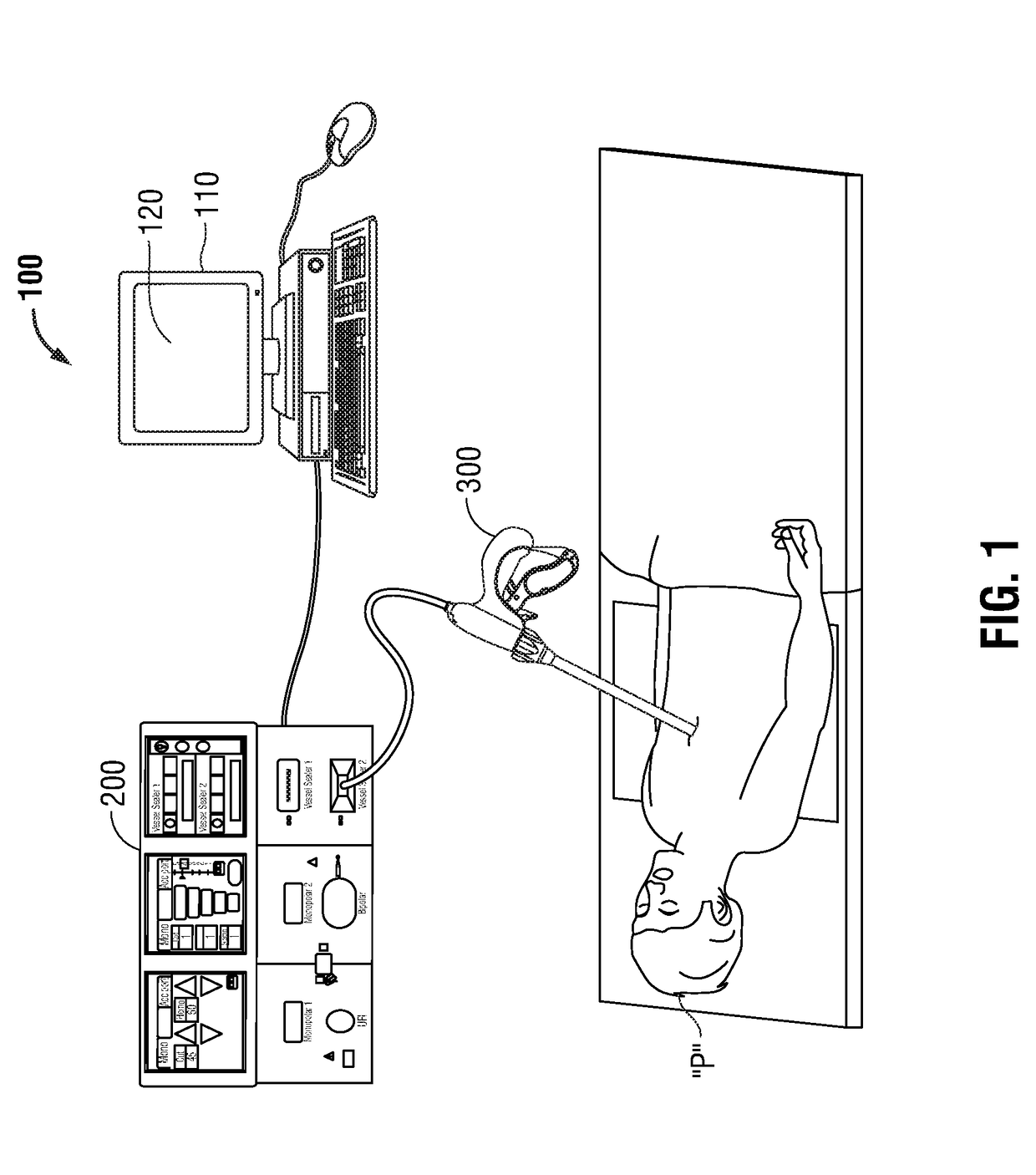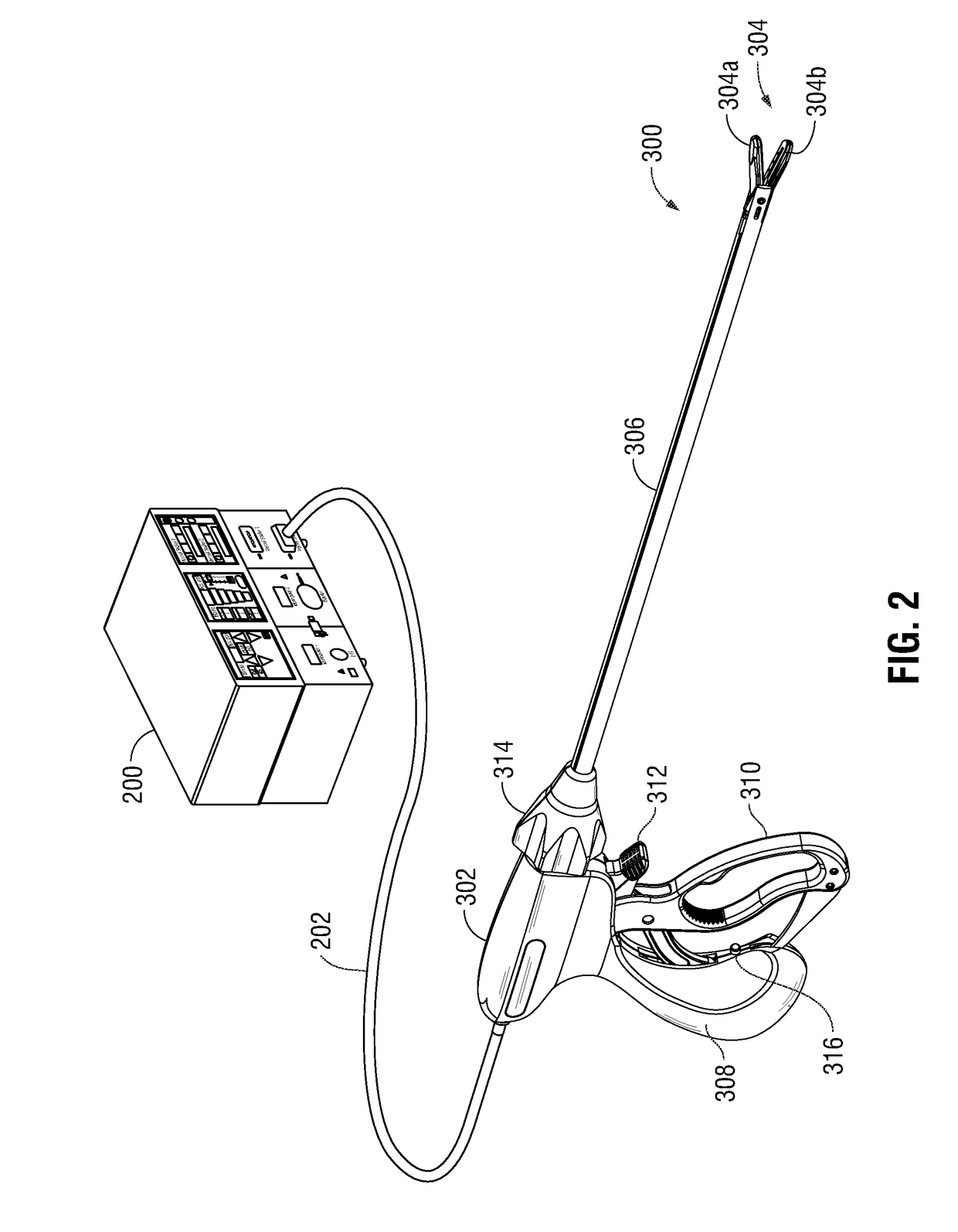Systems and methods of tracking and analyzing use of medical instruments
a technology of medical instruments and systems, applied in the field of medical systems, can solve the problems of difficult or impossible for surgeons to identify the position of surgical instruments within patients, how to educate surgeons on how to improve their techniques using existing medical instruments, and it is difficult, if not impossible, to illustrate how the surgical technique is performed in real tim
- Summary
- Abstract
- Description
- Claims
- Application Information
AI Technical Summary
Benefits of technology
Problems solved by technology
Method used
Image
Examples
Embodiment Construction
[0052]The present disclosure relates to methods and systems for tracking the location of, and data relating to the operation of, a medical instrument during a medical procedure. As detailed herein, a medical instrument in accordance with the present disclosure includes sensors disposed therein that are capable of identifying positional information in multiple degrees of freedom. Specifically, the sensors can include an accelerometer, magnetometer, gyroscope, and / or barometer. These sensors are configured to measure one or more of linear acceleration of the medical instrument, the direction in which the medical instrument is oriented (e.g., yaw and pitch), the orientation of the medical instrument (e.g., roll), and the pressure acting on the medical instrument (e.g., pressure within a patient's body cavity), respectively. The medical instrument may further include a sensor configured to determine an amount of energy applied to tissue during the surgical procedure and / or a sensor conf...
PUM
 Login to View More
Login to View More Abstract
Description
Claims
Application Information
 Login to View More
Login to View More - R&D
- Intellectual Property
- Life Sciences
- Materials
- Tech Scout
- Unparalleled Data Quality
- Higher Quality Content
- 60% Fewer Hallucinations
Browse by: Latest US Patents, China's latest patents, Technical Efficacy Thesaurus, Application Domain, Technology Topic, Popular Technical Reports.
© 2025 PatSnap. All rights reserved.Legal|Privacy policy|Modern Slavery Act Transparency Statement|Sitemap|About US| Contact US: help@patsnap.com



